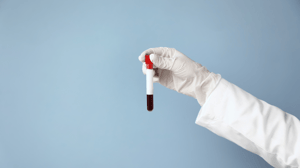Thanks to an alliance formed by several of the world’s most prestigious cancer research institutions, an ultrasensitive test has been developed that makes it possible to detect, in the blood, a protein that is present in many types of cancers.
Being able to diagnose the presence of a cancer using a simple blood sample (the so-called liquid biopsy) has always been a primary objective of researchers. Nevertheless, the tests used today still have limited specificity (and sensitivity), and their cost can sometimes be prohibitive. Now, however, this situation could be changing, thanks to an “alliance” of several of the most renowned groups of oncologists and anatomical pathologists in the world, those from the Massachusetts General Hospital, the Brigham and Women’s Hospital, Harvard University, and the Dana Farber Cancer Center in Boston, who have been working with colleagues from the University of Groningen in the Netherlands and others who are from different pharmaceutical companies.
This large super-team of researchers did not take the same path laid by other oncologists, who had tried in the past to detect, with only partial success, fragments of genetic code shed (for various reasons) by cancer cells (we wrote about this on the blog a few months ago). This time, the U.S. and Dutch researchers chose instead to focus their attention on a protein present in large quantities inside many types of tumours (and in minute concentrations in healthy tissues), developing a method to seek it out amongst the thousands of other substances present in the blood.
In the scientific journal Cancer Discovery, the researchers described how they specifically “targeted” the protein, called Long INterspersed Element-1 (LINE-1) ORF1p (from Open Reading Frame protein), which has been known since the 1980s for being overexpressed in cancer cells. However, no one had succeeded, until now, in being able to determine how much of it was present in the blood. The U.S. and Dutch oncologists came up with a specific technique called SIMOA, which has finally made it possible—and this is the cornerstone of the discovery—to precisely measure the amount of LINE-1 ORF1p present in 25 microlitres of blood, the equivalent of half a drop.
The researchers then put the technique to the test on samples of blood drawn from 200 patients with colorectal cancers, 75 with oesophageal cancer, and dozens of others with a wide variety of other cancers, including ovarian, and found it provided high specificity, especially for high-risk precursors and carcinomas. Conversely, ORF1p was hardly ever found to be present in the blood samples taken from cancer-free individuals. The method is so sensitive and it works so well that even the researchers who developed it were reportedly surprised by the results.
Much still to untangle
One limitation of liquid biopsies based on LINE-1 ORF1p lies in the fact that the results do not, at least for the moment, help to identify the location of the cancer cells that may be present in the body. Moreover, the new test is unable to identify every sort of cancer and its subtypes. “It’s exciting to see the early success of this ultrasensitive assessment tool, but there is more work to be done,” admits David Walt, researcher at the Department of Pathology at Brigham and Women’s Hospital and coauthor of the study.
Useful for cancer screening
Nonetheless, the new test can be extremely useful, alongside other types of exams, for screening campaigns, for confirming an ambiguous diagnosis, for monitoring the performance of a specific treatment or for periodic post-therapy checks.
In order to better define the test’s scope of application and to identify those cases in which it would not be of use, the authors are planning even broader trials using diverse groups of patients, which will enable them to understand all of the potentialities (and limitations) of LINE-1 ORF1p.




